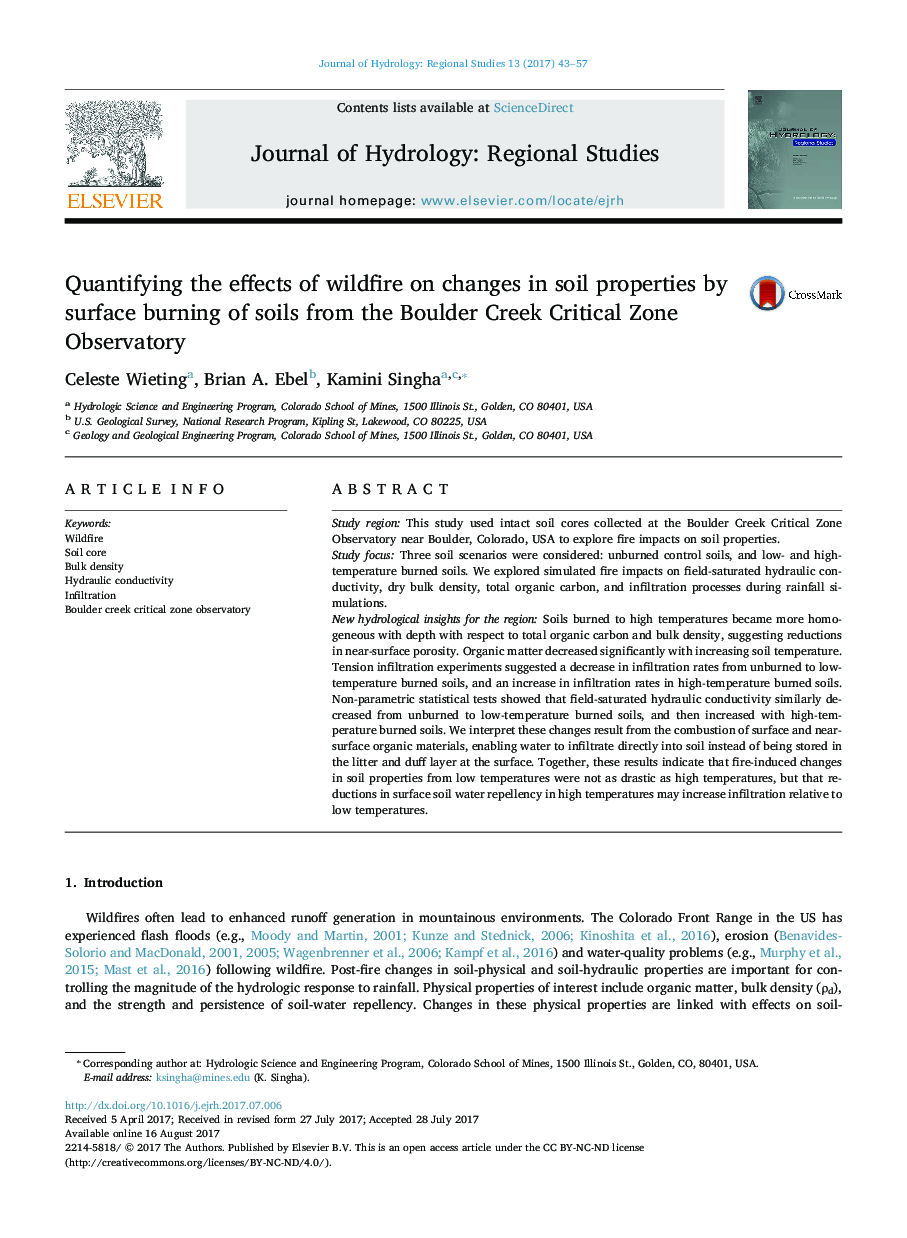| Article ID | Journal | Published Year | Pages | File Type |
|---|---|---|---|---|
| 5752180 | Journal of Hydrology: Regional Studies | 2017 | 15 Pages |
Abstract
Soils burned to high temperatures became more homogeneous with depth with respect to total organic carbon and bulk density, suggesting reductions in near-surface porosity. Organic matter decreased significantly with increasing soil temperature. Tension infiltration experiments suggested a decrease in infiltration rates from unburned to low-temperature burned soils, and an increase in infiltration rates in high-temperature burned soils. Non-parametric statistical tests showed that field-saturated hydraulic conductivity similarly decreased from unburned to low-temperature burned soils, and then increased with high-temperature burned soils. We interpret these changes result from the combustion of surface and near-surface organic materials, enabling water to infiltrate directly into soil instead of being stored in the litter and duff layer at the surface. Together, these results indicate that fire-induced changes in soil properties from low temperatures were not as drastic as high temperatures, but that reductions in surface soil water repellency in high temperatures may increase infiltration relative to low temperatures.
Related Topics
Physical Sciences and Engineering
Earth and Planetary Sciences
Earth-Surface Processes
Authors
Celeste Wieting, Brian A. Ebel, Kamini Singha,
